If you’re like us, mosquitoes can really make summers miserable. Along with the risk of disease (West Nile virus has often been detected in mosquitoes in our area), they’re a pest. We live beside a creek, though, so mosquitoes are a fact of life. However, many of the birds that also frequent our area serve as natural pest control agents. Mosquitoes are on the menu for several bird species!
Let’s look at some of the backyard birds that might help you out with your mosquito problem and how you might attract them to your back yard.
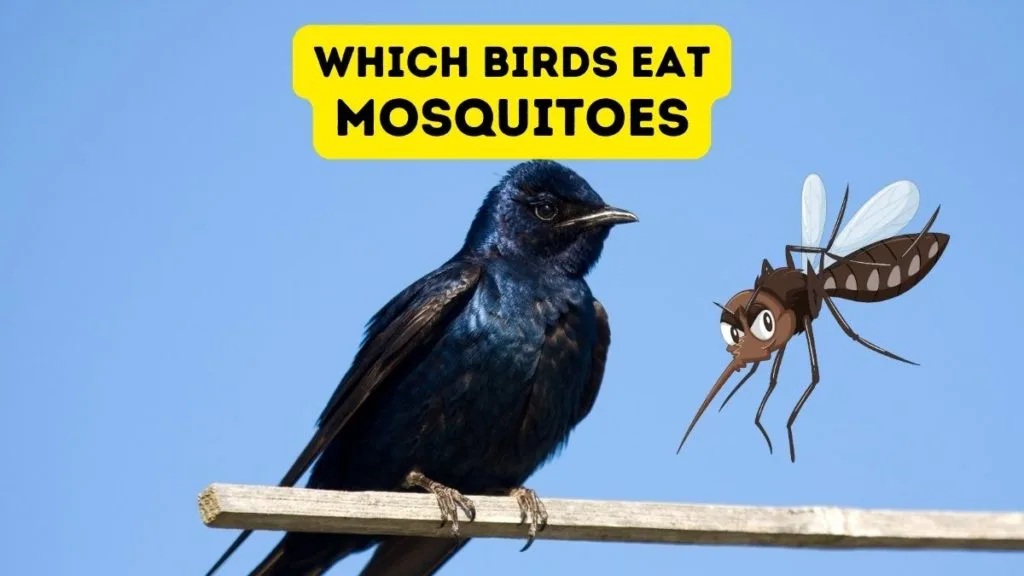
Purple Martins
Purple Martins, seen above, are often hailed as one of the most effective mosquito-eaters. These large swallows are not only beautiful with their glossy blue-black feathers, but they are also skilled aerial hunters. While they consume a variety of flying insects, mosquitoes are a significant part of their diet.
Purple Martins are particularly beneficial because they feed during the dawn and dusk when mosquitoes are most active.
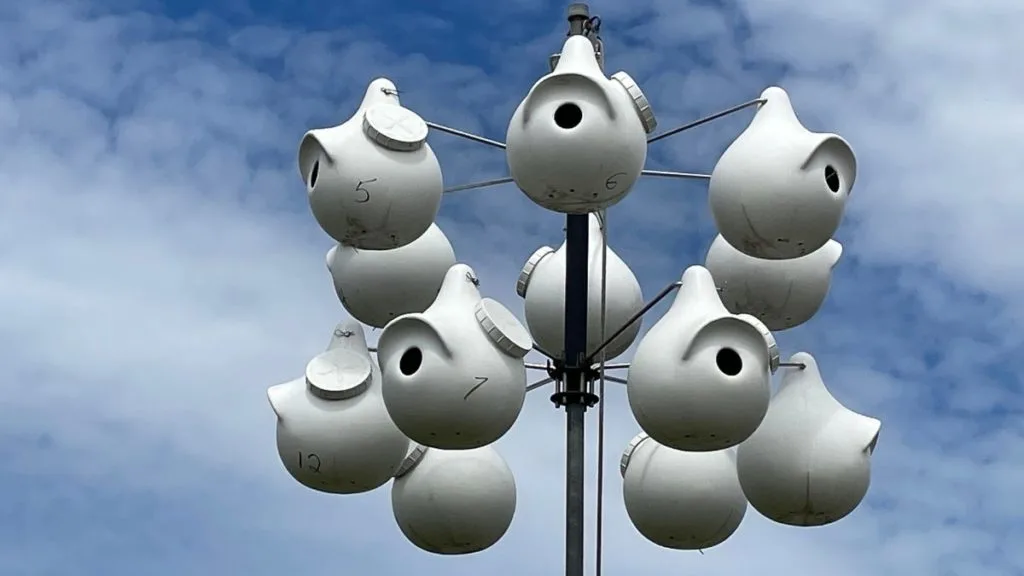
To attract Purple Martins to your backyard, consider installing a martin house or gourd rack. These birds prefer open areas, so place their housing in a spot with clear flight paths.
Barn Swallows
Barn Swallows, with their distinctive forked tails and iridescent blue plumage, are another species known for their mosquito-eating habits. These agile flyers skim the surface of ponds and streams, snatching insects mid-flight.
Barn Swallows often nest on man-made structures, so providing nesting ledges or platforms can encourage them to take up residence near your home. Additionally, keeping a water source like a birdbath or small pond can attract them and other insectivorous birds.
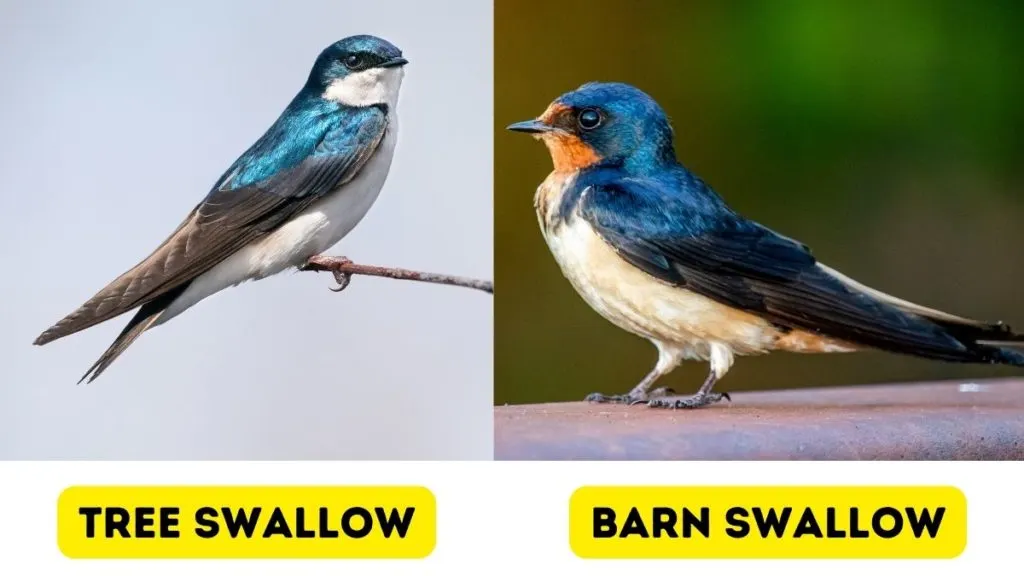
Tree Swallows
Tree Swallows, closely related to Purple Martins, are also efficient mosquito hunters. These small birds are easily recognizable by their blue-green upperparts and white underparts. They often nest in cavities, so providing nest boxes can help attract them to your backyard.
Tree Swallows are particularly fond of areas near water, where mosquitoes are plentiful. By ensuring a suitable habitat with nesting boxes and nearby water sources, you can enjoy their mosquito-control benefits.
Chimney Swifts
Chimney Swifts are fascinating birds that spend most of their lives in the air. They have slender bodies, long, curved wings, and short, stubby tails. Their’ rapid, fluttering flight pattern makes them highly efficient at catching insects on the wing.
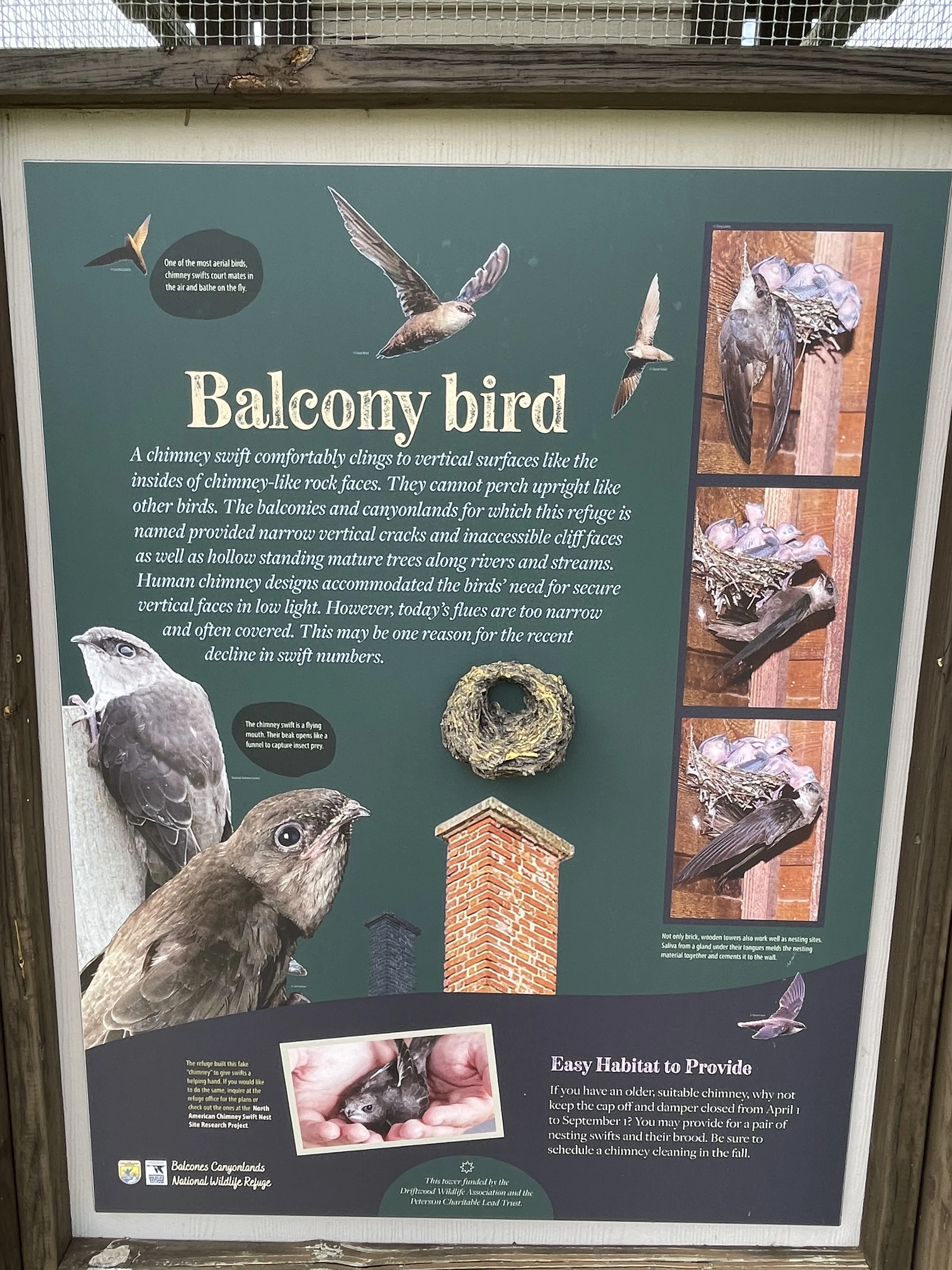
Chimney Swifts often hunt in the morning and evening when insect activity is high. This timing coincides with when mosquitoes are most active, making them effective at reducing mosquito populations.
While mosquitoes are a part of their diet, Chimney Swifts consume a wide variety of insects including flies, ants, wasps, beetles, and other small, flying bugs.

Chimney Swifts have a unique nesting behavior that contributes to their name. Historically, they nested in hollow trees, but with urbanization, they have adapted to using chimneys and other man-made structures. Some parks in our area, like the Balcones Canyonlands National Wildlife Preserve (above), have purpose-built towers for the swifts to mimic the conditions of a chimney and provide a safe nesting site. Our neighbors have also installed Chimney Swift towers so we often see the swifts on their hunting rounds!
Eastern Phoebes
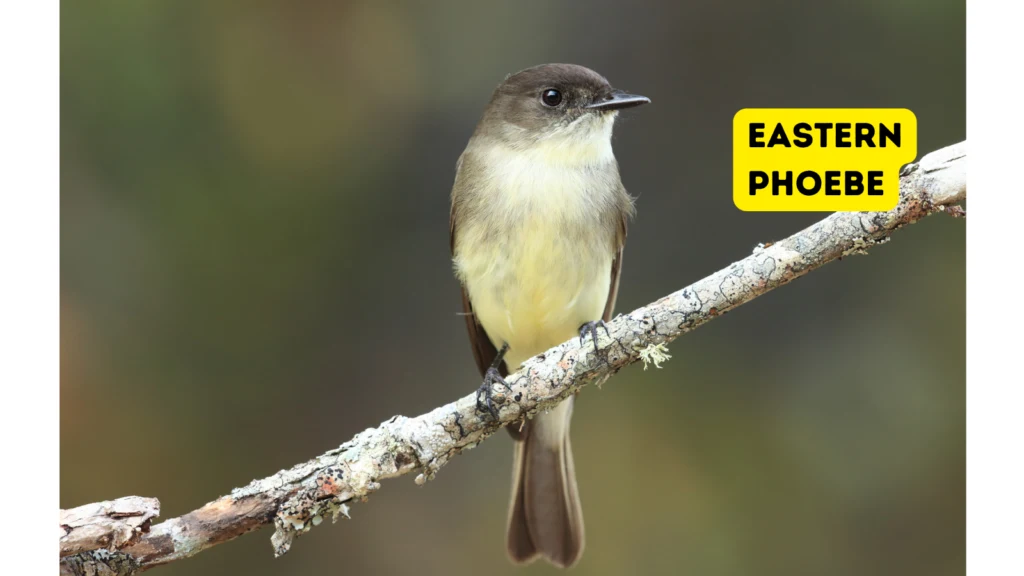
Eastern Phoebes are a type of flycatcher that play a vital role in controlling mosquito populations. These birds have a distinctive habit of wagging their tails while perched. Eastern Phoebes are patient hunters, often waiting on a branch before darting out to catch passing insects, including mosquitoes.
To attract Eastern Phoebes, consider placing nest platforms under the eaves of buildings or in sheltered areas. They prefer open woodlands, so maintaining a mix of trees and open spaces can create an ideal environment for them.
American Robins
While American Robins are primarily known for their love of earthworms, they also eat a variety of insects, including mosquitoes. Robins forage both on the ground and in the air, making them versatile insect hunters. Planting a mix of trees, shrubs, and open grassy areas can provide the habitat diversity that robins need to thrive.
Northern Cardinals
Northern Cardinals, with their vibrant red plumage and distinctive crests, are a favorite among bird watchers. While their diet mainly consists of seeds and fruits, they also consume insects, including mosquitoes, especially during the breeding season when they need extra protein for their young. Providing dense shrubbery and berry-producing plants can make your backyard more appealing to these stunning birds.
By attracting mosquito-eating birds to your backyard, you can enjoy their beauty and song while benefiting from their natural pest control abilities. It’s a win-win for both you AND the birds!
- Which Birds Eat Mosquitoes? - June 28, 2024
- Identifying Birds on Your Vacation - May 23, 2024
- Does Bird Seed Expire? - May 11, 2024
